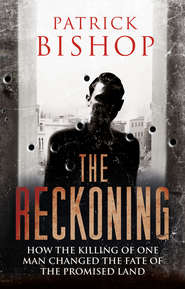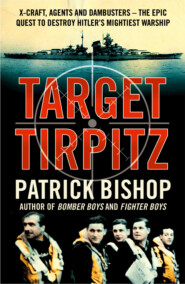По всем вопросам обращайтесь на: info@litportal.ru
(©) 2003-2024.
✖
Battle for the Falklands: The Winter War
Настройки чтения
Размер шрифта
Высота строк
Поля
Many crewmen were surprised to find the journalists still on board after Ascension. Apart from the general assumption that we would abandon ship before things became dangerous, the most common question, always delivered with a note of incredulity, was if we had volunteered for the operation or had been ‘press-ganged’. When we replied we had not declined the offer, they treated us either as deranged or warmongers. The next question would be along the lines of ‘I suppose you blokes are being paid a fucking fortune to be out here?’ To deny it merely provoked disbelief.
Soon after leaving Ascension we had our first encounter with Argentina. A Boeing 707 in military colours located the fleet before being intercepted by an armed Harrier. The early surveillance came as a surprise to the Task Force so far north and it was only the government warning that ‘appropriate action’ would be taken that stopped them after a few days. The tempo was now quickening and it seemed the government was ready for a full-scale attack if diplomatic talks failed. For some time the Captain had said there was concern about the Task Force having their hands tied but we saw no sign of this; only of resolution from the government or, perhaps more accurately, Mrs Thatcher.
The fleet transferred to battle formation as we moved through the Roaring Forties, with three frigates and destroyers forming the spearhead or ‘picket’. In the centre of a defensive screen, the two carriers, dogged by their ‘goalkeepers’, Brilliant and Broadsword, sat like queen bees. On 25 April we picked up the first news of the retaking of South Georgia and learnt that the SAS and the SBS had landed on the island days earlier but had lost two helicopters in a blizzard. It was here that the SAS had called for extra hand-grenades and a box was flown in. When the soldier opened it he found tea cups.
The SAS operation on South Georgia very nearly came unstuck. They had joined the Task Force at Ascension, D Squadron boarding the supply ship Fort Austin. They were followed by G Squadron, officered and manned almost entirely by members of the Household Division. In all 126 men were sent. The SAS headquarters stayed at the planning centre of the operation aboard HMS Fearless, even though until the landing several thousand miles separated the ship from the rest of the unit.
On 18 April, fifteen men left a warship in five Gemini rubber boats to land on Grass Island within sight of one of the Argentine bases on South Georgia. The Geminis were powered by Johnson 40 outboard motors. They were considered notoriously unreliable and the SAS had complained about them for years. Three of the engines broke down on the journey ashore. One of the Geminis was swept away into the darkness by gale force winds and the three-man crew spent the night adrift before being rescued the following day by helicopter. The second Gemini crew managed to drag themselves on to the last piece of South Georgia before Antarctica and lay low for five days until they were sure the island was taken before they radioed for help. The third boat was towed ashore by the others and the nine men lay up signalling reports to the fleet. The intelligence the SAS provided persuaded them to go for a surprise attack on the Argentinian positions.
The special services were to continue to play a vital role in the war. On 1 May, the first SAS and SBS patrols went on to the Falklands to test the lie of the land in advance of the Task Force assault. ‘Getting on the islands was a real psychological barrier,’ one of them recalled later. ‘No one knew how good they were or whether there wouldn’t be a reception party to scarf you up when you arrived. It was like being the first people on the moon. You didn’t know whether you were going to disappear into thirty feet of dust or find some hard standing.’
Three patrols concentrated on Port Stanley. The remainder reconnoitred around Port Howard, Fox Bay, Goose Green and Bluff Cove. They hid during the day and at night moved in close to study the Argentinian defences coming within a hundred yards of their troops.
Back on the ships, the daily intelligence briefs grew fatter as the SAS reports filtered back. Some of them were remarkably accurate, especially the picture they built up of the Argentine garrison at Stanley. Troop positions, artillery and armour were all exactly described. But there were also morale-boosting reports of dysentery, food shortages and near mutiny among the conscripts that were subsequently shown to be wide of the mark.
For the SAS, the Falklands war was a return to the role that they were originally designed for by Colonel David Stirling in the Second World War – long-range operations behind enemy lines, and a diversion from the anti-terrorist operations and training of Third World armies that had preoccupied them for the preceding decade. At Pebble Island they showed they were still masters at it. The island had been identified by naval radar and Harriers as the main diversionary airfield for Argentine planes flying to Port Stanley from the mainland. Rear Admiral Woodward’s enthusiasm for the raid was only lukewarm at first, as he was preoccupied with the battle in the air. The first operation to put a patrol on the island was stood down shortly before the helicopter carrying the men was due to take off.
The six-man patrol that landed on West Falkland on 7 May had to make a slow approach to avoid detection. The SAS commander was on the point of aborting the mission as the men were needed for pre-landing recces on East Falkland. Then at four o’clock on the afternoon of 12 May the patrol radioed through to say they had found the Argentinians. That night the rest of D Squadron was flown in. They marched for two hours across the island while a warship shelled the defenders’ positions. When they left, eleven planes had been destroyed and two SAS men wounded – apart from Captain John Hamilton, the unit’s only combat casualties of the war. Hamilton was killed charging an Argentine machine gun post on West Falkland just before the ceasefire. Much more tragically, the SAS had lost nineteen men from G Squadron when a helicopter crashed into the sea the day before the landings.
On Friday, 30 April, we were told the Task Force would launch attacks the next day on the Falklands and that three frigates would start a naval bombardment. The carriers would stay in the northeastern corner of the 200 mile zone, the farthest point for land-based Argentine aircraft to reach. ‘I’m sure we’ll hit them very much harder than they’ve expected and we’ll soon have them back at the negotiating table keen for a diplomatic solution,’ Commander Tony Provest, the second-in-command, said.
For us, the war started the next morning, at 7.44 a.m. GMT, about three hours before dawn. (Throughout the voyage the Task Force had used ‘Zulu time’ or GMT, and as a result we were getting up at about 3 a.m. local time and going to bed at about 9 p.m. local.) A Vulcan bomber, codenamed ‘Black Buck’ and flying all the way from Ascension Island refuelled by Victor tankers, dropped twenty-one 1,000 pound bombs on Stanley airfield. Only one hit the runway and the raids were repeated later in the war, with no more success. From the bridge you could see the Harriers being prepared for battle, the yellow tip on the Sidewinder missiles beneath the wings showing they were armed. At 8.15 the flight controller told a helicopter pilot: ‘The Vulcan has gone in. We are now at war.’ At that moment the departure from Portsmouth more than three weeks earlier belonged to another existence. At 9.05 four Harriers took off, their jets burning brightly against the clear, starry sky. They were to fly CAP (combat air patrol) while the Harriers from Hermes, who were expecting to lose three planes, would hit Port Stanley airfield with high explosives and cluster bombs. Others would attack Goose Green, thought to be the main base for the Pucara, the dangerous counter-insurgency aircraft.
The pilots from the first excursion looked tense although they had seen no enemy planes. The dawn came up slowly, its pink fingers curling over the horizon revealing a calm sea. Soon afterwards we had our first air raid warning and were told that Argentine Mirages had been ‘splashed’. The announcements throughout that long and tense day tended to paint a rather more serious picture of events, with reports of Super Etendards unleashing Exocets at incredible ranges of 140 miles. (This later turned out to be missiles fired at one of the Harriers.) On the bridge we wore our anti-flash and scanned the horizon for enemy planes, chewing toffees. An officer held up a picture of a Mirage so we would know what they looked like. There were continual games of cat and mouse over the horizon as the Argentine jets tested the fleet’s responses, veering away when they were intercepted by Harriers. We were frequently warned: ‘There is a possible air raid building in the west. On anti-flash.’ After long minutes we were told, ‘It’s all right. The Harriers have chased them away.’ In the meantime the bombardment of Stanley airfield continued. Crewmen broke off for ‘action snacks’, drank their tea from ‘action mugs’ and then headed for ‘action messing’. The word had become something of a joke and they now looked forward to an ‘action smoke’ with their ‘action pint’.
It was a day of confusion. At 5.45 p.m. with a weak winter sun washing over the ship, we were told our Harriers had attacked a submarine close to the Falklands. Moments later we were informed it was a rock formation which looked like a submarine.
It was also a day of some success. It had shown the Argentinians what the Task Force was capable of and only one Harrier from Hermes got a bullet through its tail. The rest returned undamaged. In the evening Paul Barton, an RAF pilot attached to 801 Squadron, shot down a Mirage with a Sidewinder missile and a Canberra with three men on board was also splashed by Alan Curtis, who a few days later died in an air collision. The Argentinians said they had destroyed eleven Harriers, two helicopters and had damaged several ships and an aircraft carrier. In fact only two ships were slightly damaged by bombs and cannons. A Lynx helicopter, which was directing naval guns, was hit by machine gun fire. The main Task Force came under attack from three Canberras which were driven off, one shot down and another limping home.
Вы ознакомились с фрагментом книги.
Приобретайте полный текст книги у нашего партнера:
Приобретайте полный текст книги у нашего партнера:











